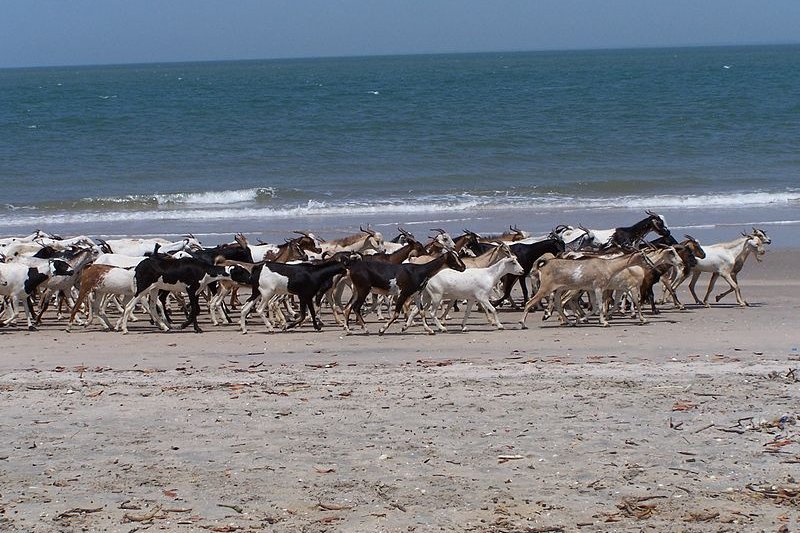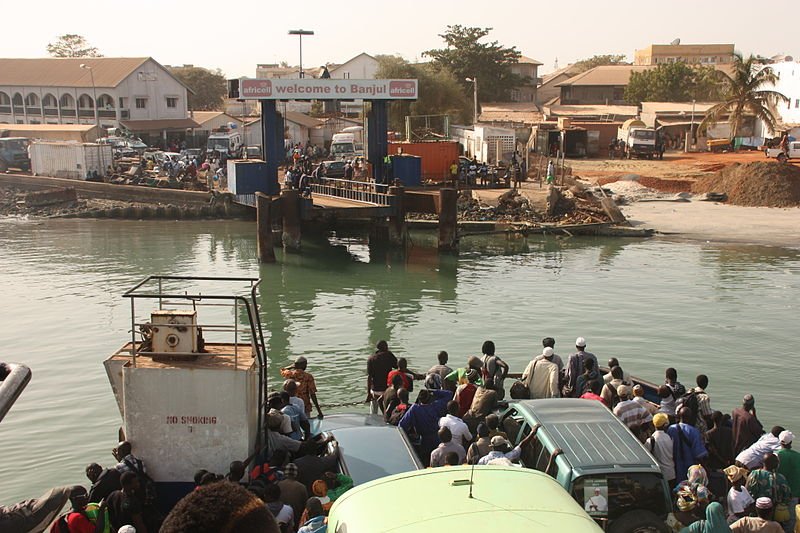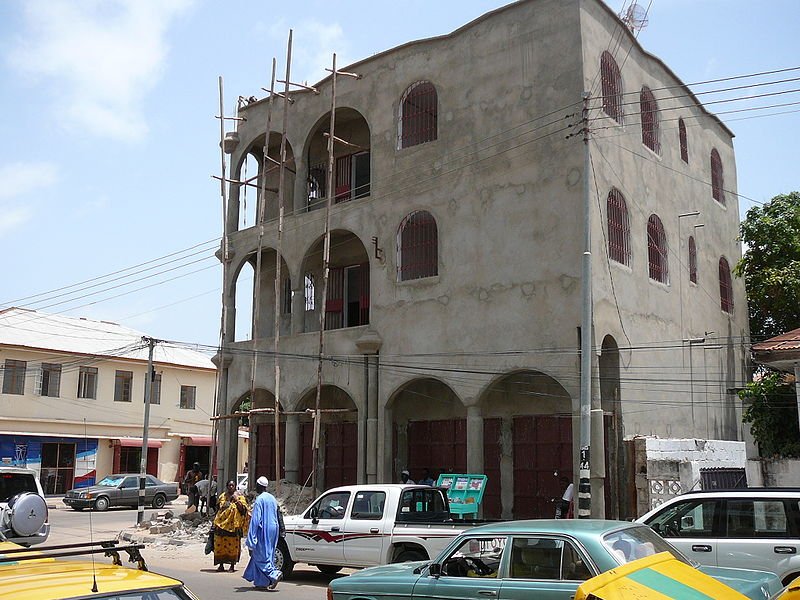 A herd of goats on a beach in Banjul, Gambia
A herd of goats on a beach in Banjul, GambiaSource: https://commons.wikimedia.org/wiki/File:104_1917BanjulBeachGoats.jpg
Author: Niels Elgaard Larsen

Banjul is the capitaland main city in The Gambia. While the city proper has a population of only 35,000 people (2012 estimate), the Greater Banjul Area, which includes the City of Banjul as well as the Kanifing Municipal Council, has a population of over 400,000 people. The City of Banjul is on Banjul Island (formerly St Mary's Island), at the mouth of the Gambia River as it empties into the Atlantic Ocean.
 Ferry at Banjul, Gambia
Ferry at Banjul, GambiaSource: https://commons.wikimedia.org/wiki/File:Ferry_arriving_in_Banjul,_The_Gambia.jpg
Author: Lars Curfs

Banjul got its name from Bang julo, the Mandika word for a type of fibre used for making ropes. The word was corrupted to Banjul. During the British colonial era, Banjul was developed into a trading post and base for suppressing the slave trade. During that time, it was named Bathurst, after Henry Bathurst, the secretary of the British Colonial Office. Banjul Island was likewise renamed St Mary's Island.
After independence, the name Bathurst was changed back to Banjul, while St Mary's Island was renamed Banjul Island.
Visiting Banjul
Banjul International Airport, also called the Yundum International Airport (BJL), serves as the main gateway to The Gambia. Until 2001, it was one of the selected airport for use by NASA Space Shuttles in case of emergency landings. The airport receives flights from Birmingham, Bissau, Brussels, Casablanca, Conakry, Dakar, Frankfurt, London and Manchester. Building under construction in Banjul, Gambia
Building under construction in Banjul, GambiaSource: https://commons.wikimedia.org/wiki/File:Gambia_Banjul_0016.jpg
Author: Atamari

Places of Interest in Banjul
- African Heritage Museum
- Albert Market
- Arch 22
- Banjul Court House
- Banjul State House
- Gambian National Museum
 Latest updates on Penang Travel Tips
Latest updates on Penang Travel Tips

Copyright © 2003-2025 Timothy Tye. All Rights Reserved.

 Go Back
Go Back